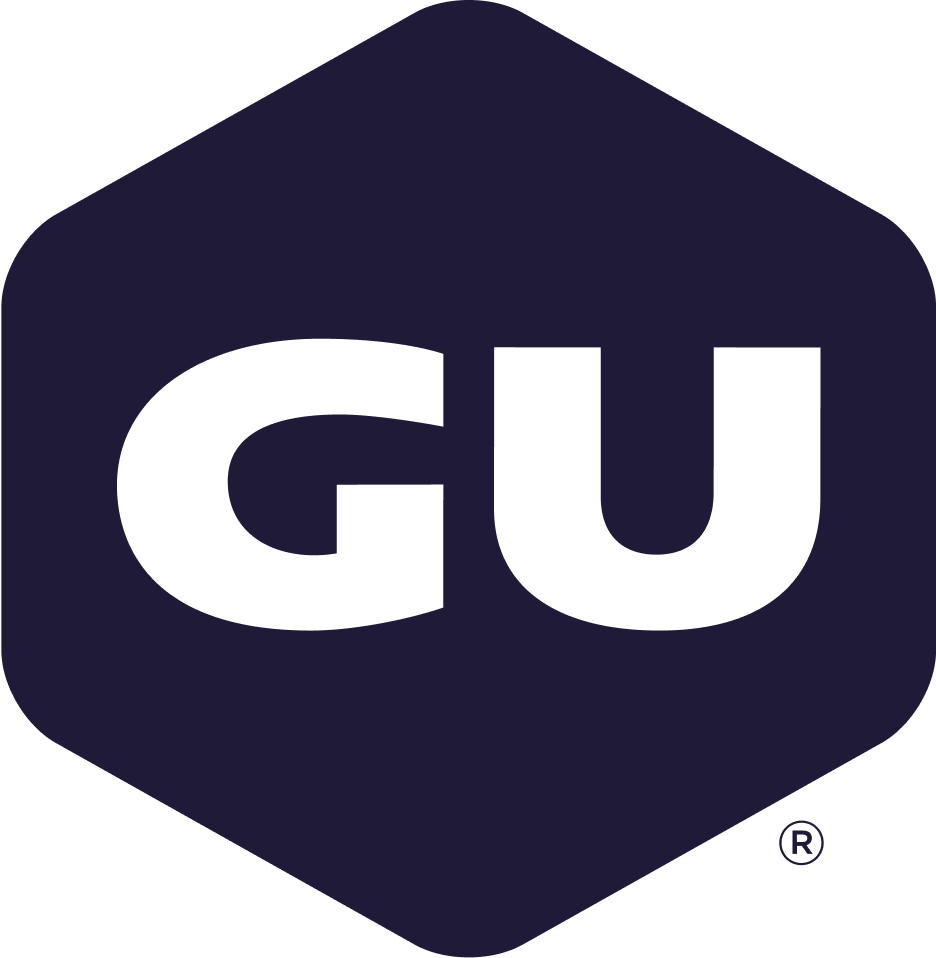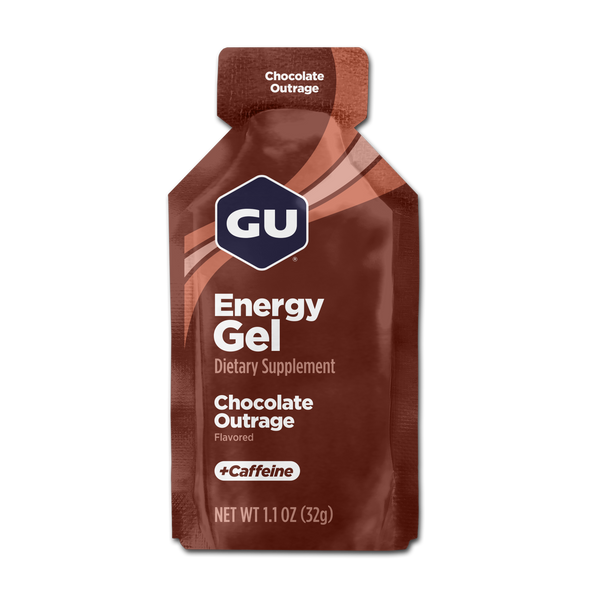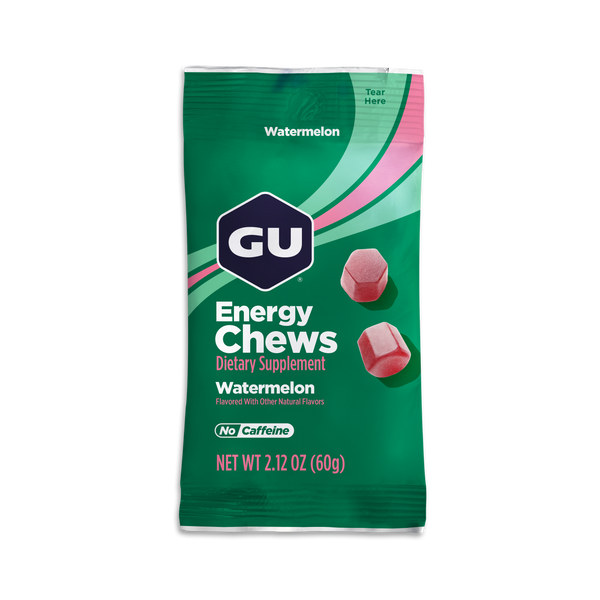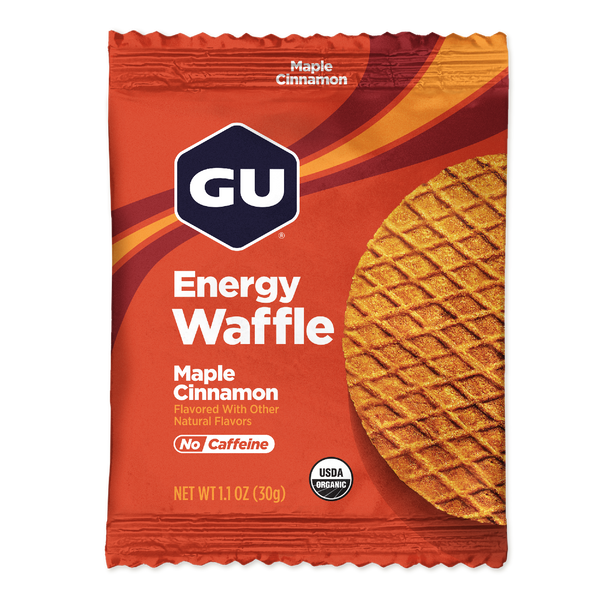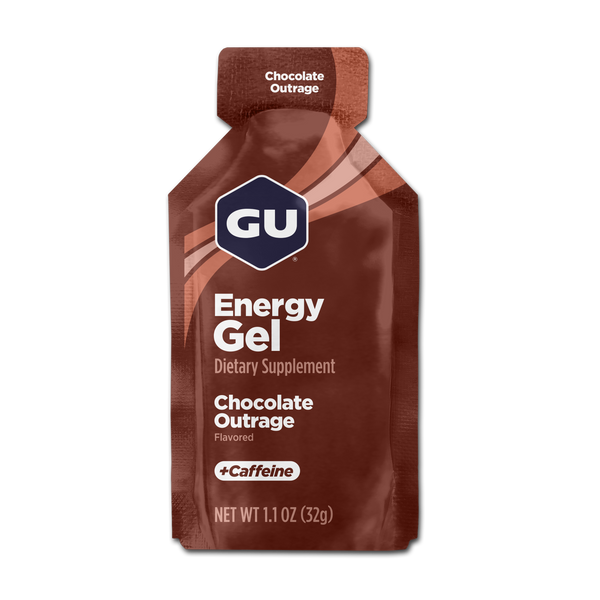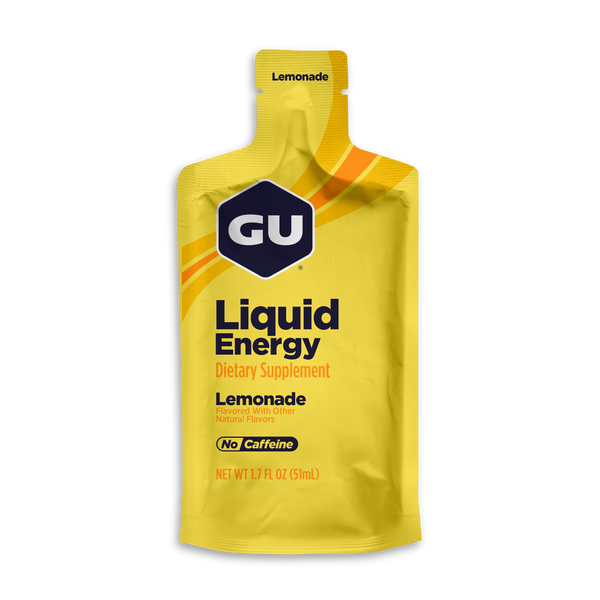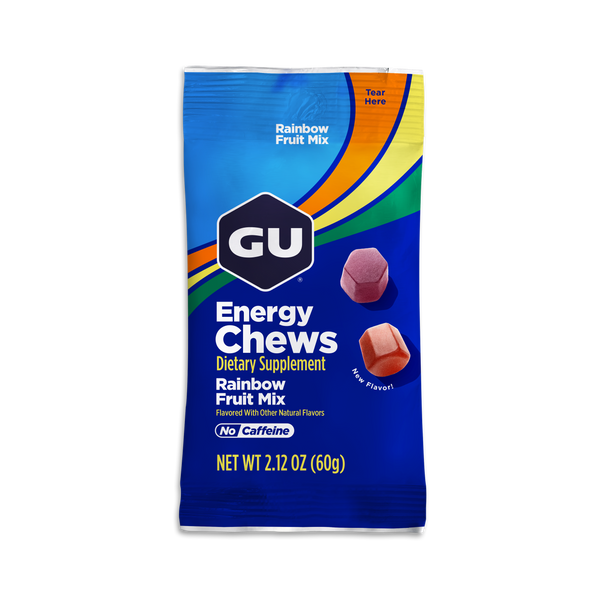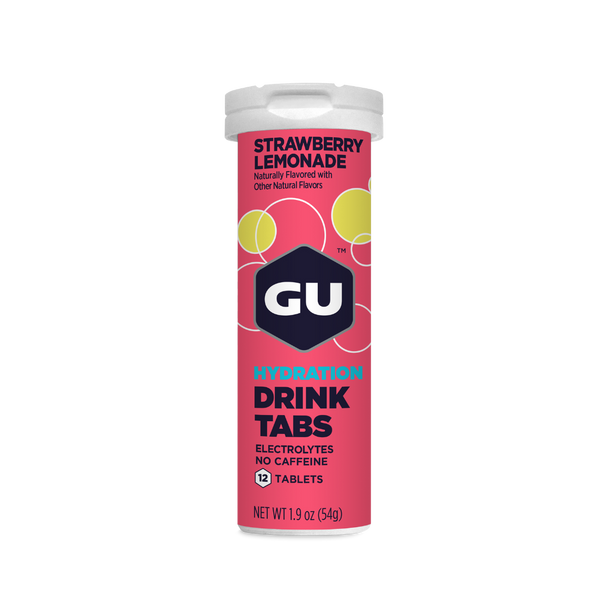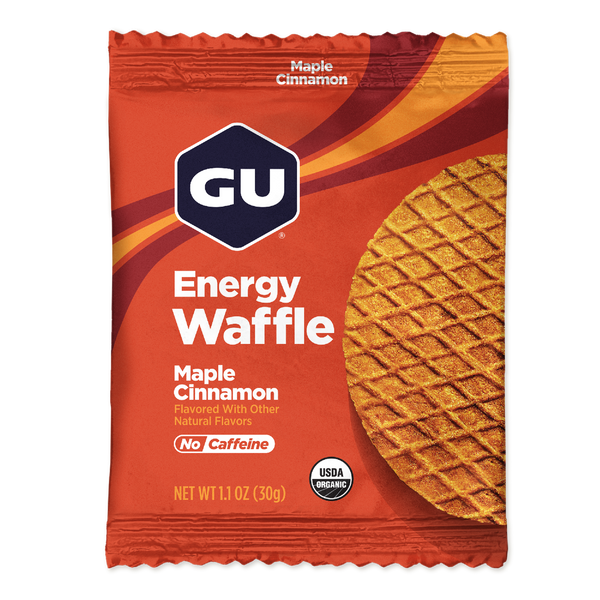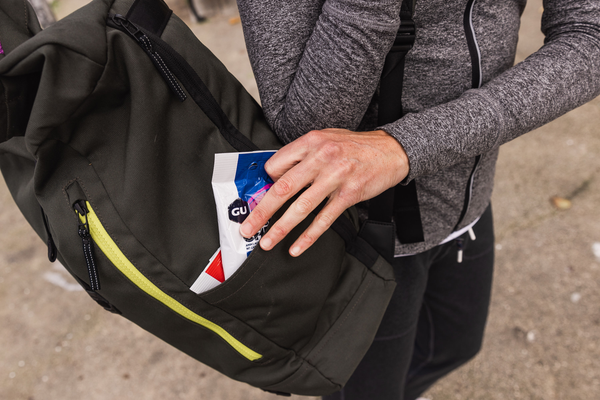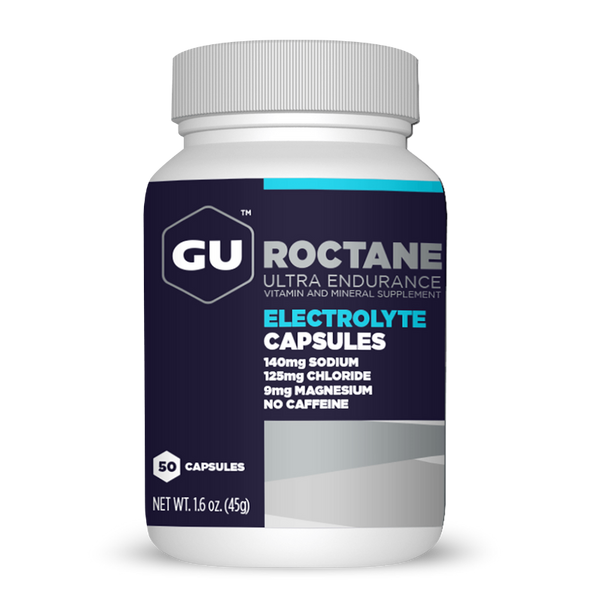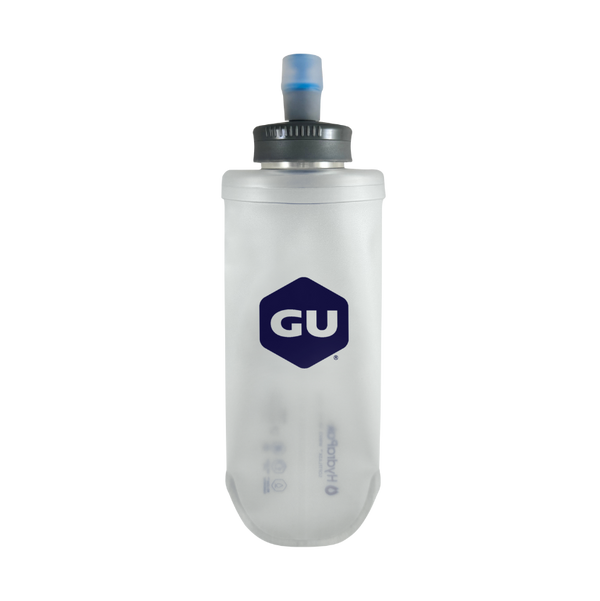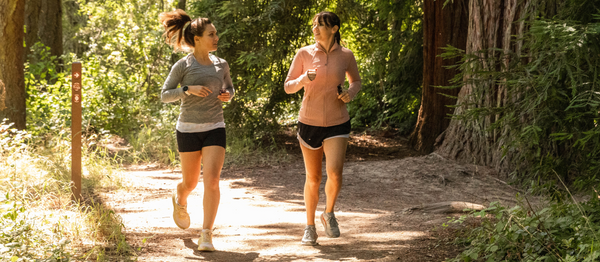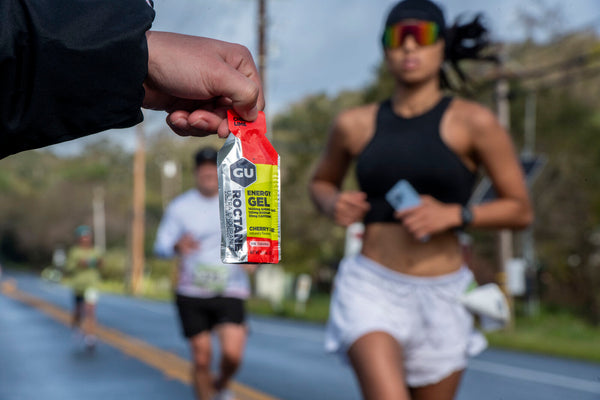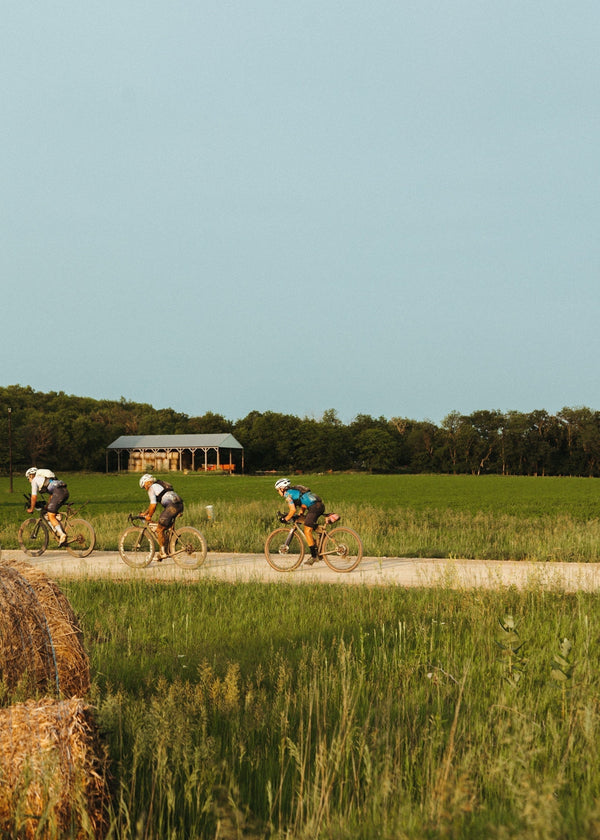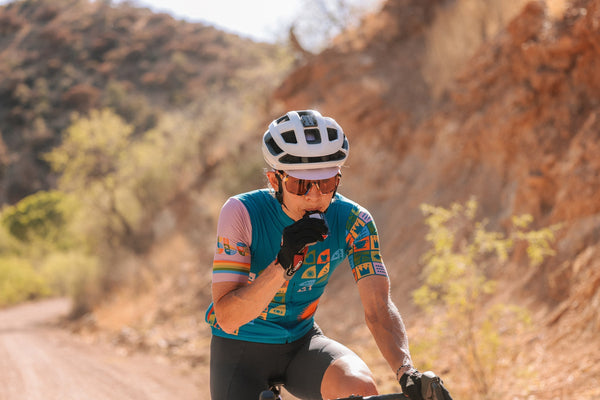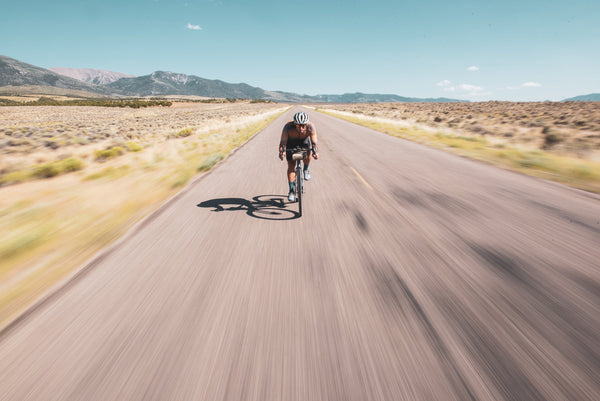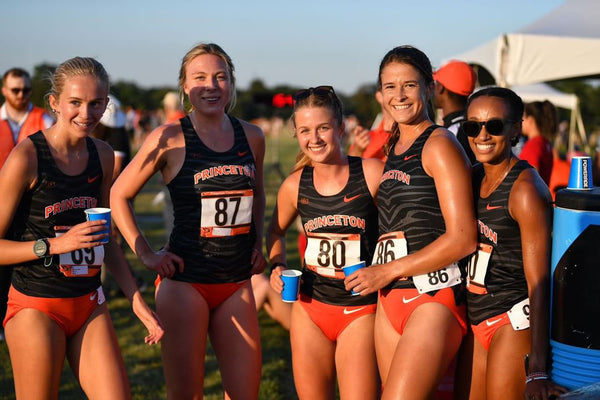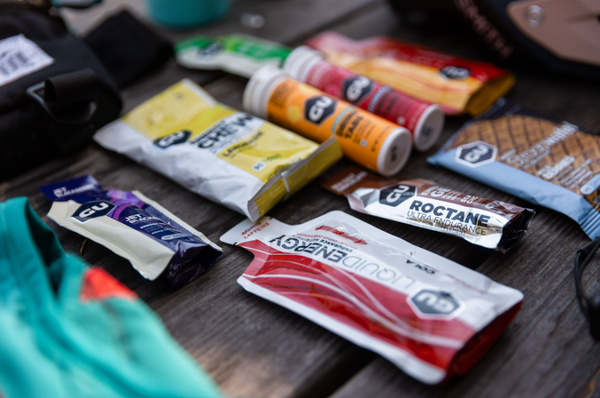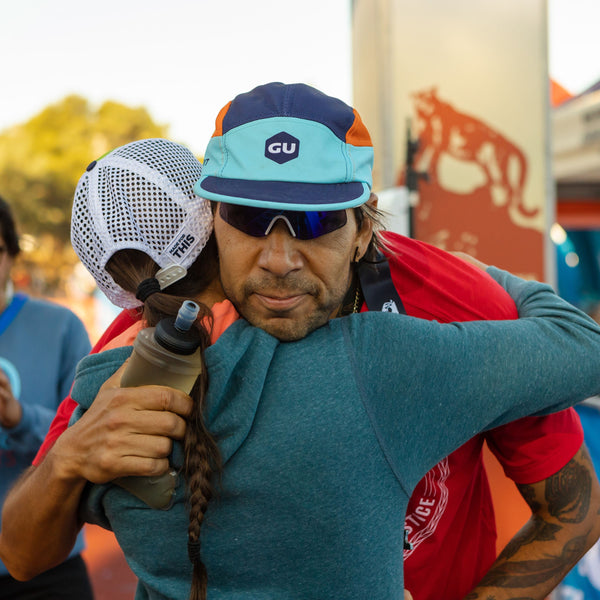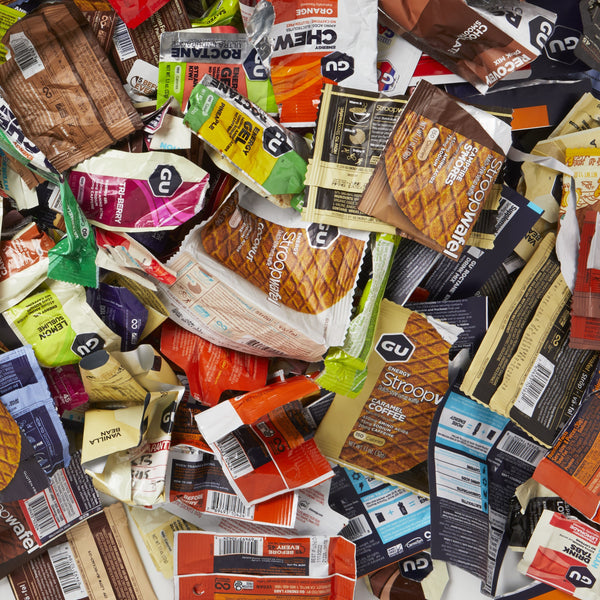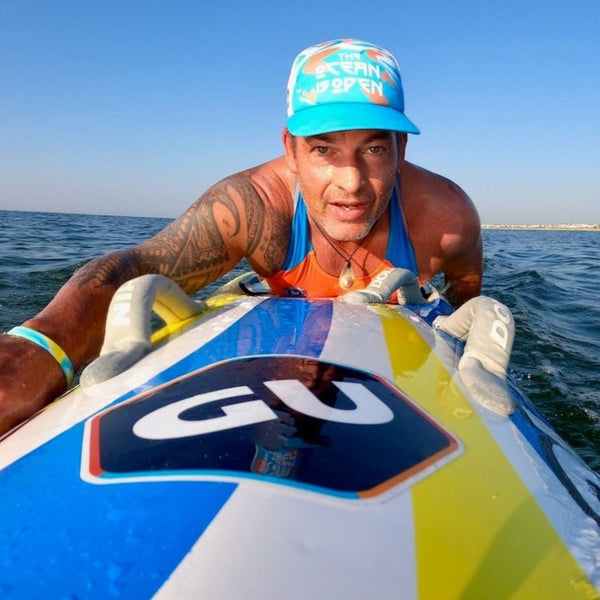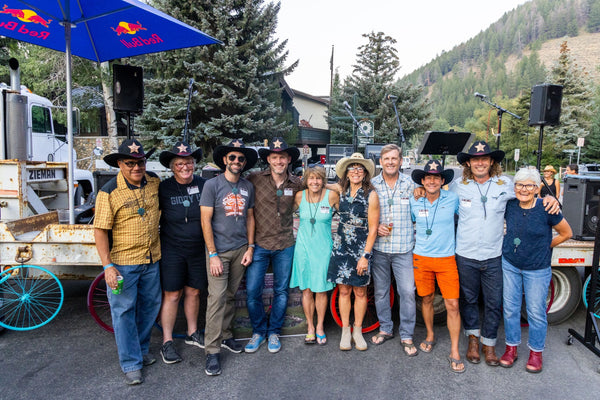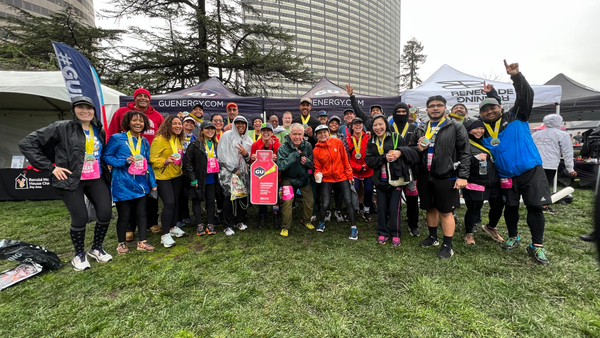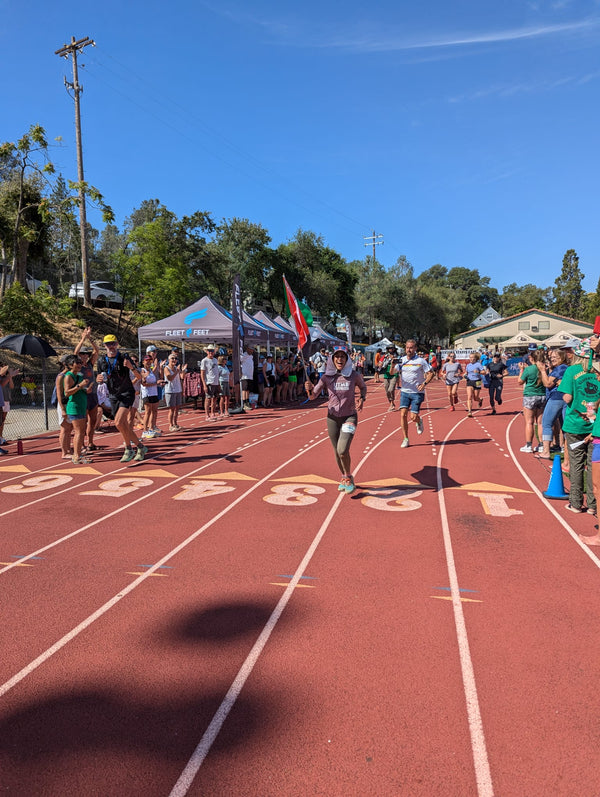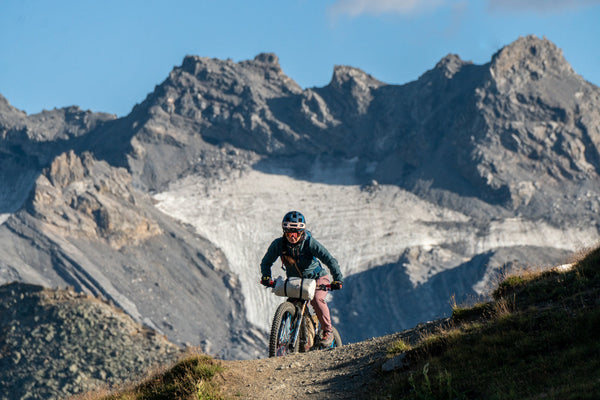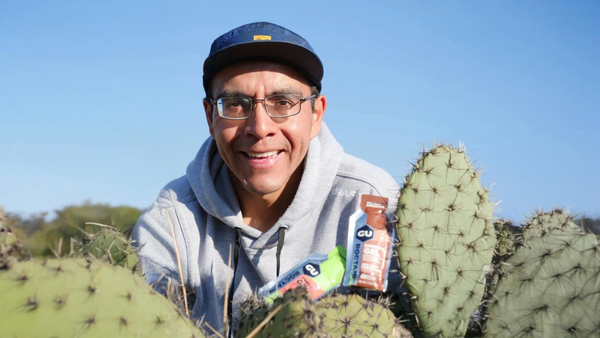It’s been over a week since Western States 100 with full reflection on the race & run. My body is feeling fully recovered and back to light activities. This course definitely was challenging, with the first 50k through high mountain terrains. The race begins with a three mile climb to the highest point of the course, topping the summit at sunrise, then 23k feet of descent and 18k feet of climbing for the next 98 miles. The sun, always a key component to the day’s journey, brought the usual heat that this race boasts about. I was continually stuffed with ice - in homemade ice bandanas, in my hat and arm sleeves - the game was on to keep core temperature down while maintaining a steady pace through the day, always moving, always taking in calories, moving forward.
 Photo: Elmer Ferro
Photo: Elmer Ferro
This run couldn’t have been completed without the loving, caring support of the team that was my crew: Hayley Nichols, Brian Williams, Lydia Jennings, Craig Curley, Patrick Reagan, Celia Santi, Magda Boulet, Rising Hearts, Jordan Daniel, and GU Energy Labs - y’all are rad and deserve the cake with this finished achievement. For the many that follow my art, running has become another beautiful way for me to stay healthy, celebrate, engage and practice another art form itself of movement. I’ve seen it evolve in the short span of time; the two have become something of a practiced intersection. This iteration of the practice took me to Washoe ancestral lands, Tahoe National Forrest area and the Western States Endurance Run, working with Rising Hearts. [Note: Yatika's run supported the Running on Native Lands Initiative spearheaded by Indigenous-led advocacy group Rising Hearts. The initiative aims to make land acknowledgements at race events common practice and encourages partners to go the extra mile by giving back to the communities from which the land is borrowed.]

I’m very grateful to have collaborated with them, GU Energy Labs, and the Wašiw community to bring education about our collective missions to the Western States event by introducing new narratives and inclusions as Indigenous peoples, runners, leaders, scientists and more.
This was more than a run for me, it incapsulated a full spirit of hope & pride to pave way for strength in conversation, future, Indigenous community building with endurance, running & crewing.

Words can’t describe the elation of finishing that race, I’ve known about this iconic run since I got enamored with the idea of long hours through beautiful landscapes and trails.
It was something to aspire to and we did it, it really was a dream circling the last 300 meters on the famed Auburn track with my whole support team there, running together to cross the line. In that moment, I didn’t feel the quad pains I had in the last 20 miles; I didn’t feel the open blisters on my feet that resulted from laying in the riverbeds and creeks to stay cool, socks wet through miles of trails. In that moment tears of happiness, love and accomplishment ensued because I was a moving part of a bigger prayer and journey we all put forth - my pacers, crew, friends and family to see this moment happen for Indigenous representation and awareness.

What happened on course
The heat of day started a few hours before arriving at Robinson Flat aid station at mile 30. I remember this point as it was a starting point during training camp in May. Over Memorial Day weekend, the camp covered 70 miles of the course over three days. This pre-run was important as it allowed me to visualize the miles ahead, the major climbs, and just mentally to be able to visualize the hours ahead. The aid station was full of buzz, dust from runners, a craze of water being sprayed to stay cool, fans and crew for the many who were coming in and those that had already passed through. It was there that I saw some runners that were in bad shape, with heat or other issues. I couldn’t stay long. I got my watermelon, nutrition, salts, and left. There are 20 aid stations throughout the 100-mile course, so if you take your time at each one - 5 minutes or so - that’s two hours out of your time, with a 30-hour cutoff. My plan was to stay for under a minute if possible and go.

This race is as big as it gets in endurance running and fanfare is huge. Only 350 runners are selected each year, through a very competitive process by way of lottery selection, qualifying races and so forth. Each major aid station had the hype that brought smiles and relief from hot hours on the trails to the helping hands of crew, ushering you off towards the goal. At Michigan Bluff, mile 55, I was happy to see Hayley, who brought a needed smile and comfort. She led me to the crew and my coach, Patrick. I changed clothes, shoes, and socks and felt like a new runner.
Then I was off and made good time for the next ten miles. I picked up my first pacer, Craig Curley, at Foresthill aid station at mile 62 and we ran for ten miles then hiked/ran for the last ten. That section is where things became hard. It’s a 10-mile descent to the river and my quads felt it and weren’t ready for the pounding of such work. In that same moment the blister opened up, making it hard to run. Eventually we moved through it. Craig helped me with talk, reliving our shared journey at the Boston Marathon in October and just being in the absence of light.
We finally crossed the river together. It was a very tough point for me, a low point for sure. I picked up Brian at mile 80 and we went into the night. I knew this section was very runnable as the hard stuff was behind me. I got a second wind and ran, still imagining that the sub-24 was possible. It was a difficult 10 miles. I could climb very well but any downhill movement brought severe pain and I appreciated Brian for his help in these moments. Scott Jurek greeted us at 6am or so at Quarry road at mile 90.7. He’s won the race 7 times and is a legend of the sport, so it was cool to see him working the aid station and offering me some broth to help me the last 10 miles. We snapped a photo, Brian and I, and then continued on to a climb I remembered well to Pointed Rocks. I picked up Lydia at Pointed Rocks and together we took the run to the finish. She also helped me finish my only other 100-mile run in Ouray, the Ouray 100. I believe in her and the work she does, if you don’t know who she is, be sure to check her out! I believed in her, Craig, and Brian to help me cover the trails to the finish. Lydia, thank you for encouraging me in a very painful place and pushing me through to find new meaning in those last miles. I'm forever grateful for your work and friendship.

